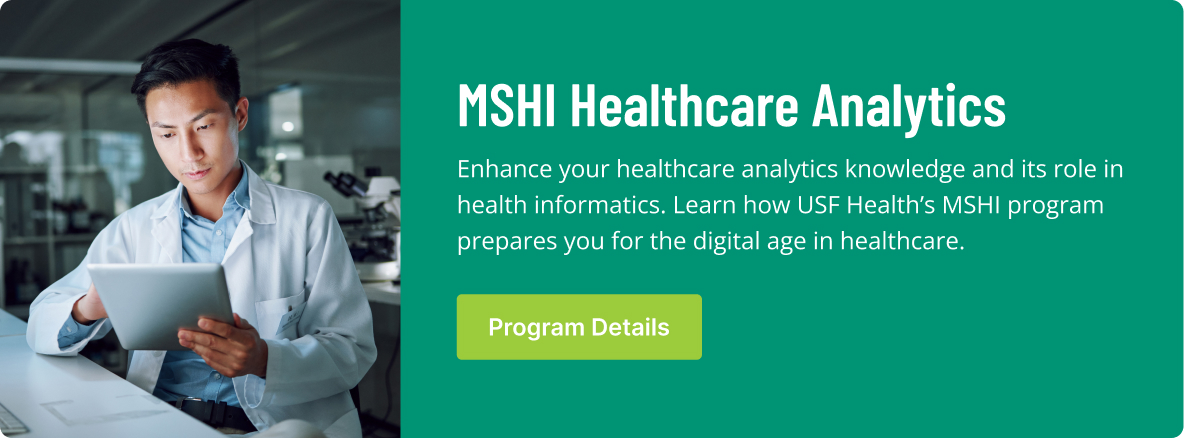The healthcare industry is suddenly awash in data pouring in from wearable devices, electronic health records (EHRs) and clinical studies. The information can be integrated into patient care in different ways, but processing that data and implementing an analytics strategy to get the most out of it is a challenge healthcare companies are struggling with.
Data has many uses, but while improving operational and financial outcomes are undoubtedly important, its biggest potential impact is directly applied to the patient. Turning raw data into actionable information that can improve patient outcomes was a hot topic among health IT professionals at HIMSS18 in Las Vegas.
One thing on display at the conference is the plethora of data analytics approaches and use cases in which this emerging science is being applied. During an education session titled “By the Numbers: Leveraging Clinical Analytics Data to Improve Patient Outcomes,” Michelle Flemmings, chief medical information officer of Pagosa Health Center in Colorado explained broadly her organization’s mentality to making use of its own clinical data.
“You have to pick something that is clinically relevant and is important enough to every stakeholder involved,” Flemmings said. “You have to know your benchmarks so you can measure your success and never be afraid to take apart processes that don’t work. It’s dangerous, silly, a waste of time and potentially a waste of life not to. Look at your own processes and workflows and think that if itty bitty Pagosa can do it, anyone can do it.”
Through the session, Flemmings described how the center was able to significantly reduce the time from when a patient came in to the center to when they saw a doctor. This had a positive impact on length of stay, level of patient satisfaction and the number of patients who left without being seen.
“This means we are seeing, treating and discharging people who don’t need to be admitted to a hospital quicker and we are diagnosing and admitting those who do faster as well,” Flemmings said.
Unlocking Data’s Potential
To achieve peak data performance, an organization must look at key performance indicators that are clinically relevant to a specific problem. In doing so, organizations have to nail down how exactly they intend to analyze that data and how they will turn it into an asset that improves health outcomes.
As an organization defines the framework of its analytics strategy, here are four principles that will help steer them in the right direction.
- Identify what to measure and what decisions the data will inform: You can gather data, analyze it and even build an algorithm that can provide insights you otherwise may never have received. But data should be specific, informing decisions on a focused topic and not being used across disciplines: The data used to analyze payments shouldn’t be used to analyze a workflow. The overall impact of the data must be taken into accountas well. An algorithm can predict the likelihood of a patient with cardiovascular disease being readmitted within two weeks. That assessment has value, but how it impacts care before release, future interventions and follow-up care is of greater importance.
- Making the most of EHR data: With the volume of data at healthcare’s disposal, it only makes sense to use the largest amount possible. As the amount of EHR data grows, finding populations from which a larger amount of data can be analyzed to create more accurate insights will be of great benefit to the entire healthcare system. Recently, Google and researchers from San Francisco Bay Area universities teamed up to showcase an accurate predictive analytics approach using EHR data and the Health Level 7 data standard known as FHIR, or Fast Healthcare Interoperability Resources. Looking at a variety of datasets across different scenarios and patients, they were able to show that deep learning, a type of machine learning that seeks to mimic the decision-making process of the human brain, was possible and can use analytics to predict a large amount of clinical problems and outcomes.
In Eric Schmidt’s opening keynote speech at HIMSS18, the former executive at Google’s parent company Alphabet Inc., spoke of the importance of EHRs and the continuing role they will play in healthcare.
“The arrival of EHRs has been the biggest development of the last 10 years,” Schmidt said. “They have got us started. Now we see this shift toward value-based care. EHRs and the data they provide will continue to play a big role in that.”
- Target high cost treatments: Data analytics can make a big impact on the bottom line, but for quicker ROI, focus on areas that are high cost and low value to the hospital, particularly areas where unnecessary and duplicative treatments are an issue. An article from the Harvard Business Review provides the example of antibiotics used to treat infections in newborns. Blood samples confirm less than .05% of newborns are thought to have an infection, but 11% of them receive antibiotics. Healthcare provider Kaiser Permanente applied predictive analytics to curb the overuse of antibiotics in this case using an algorithm that can predict risk of neonatal infection by looking at the mother’s clinical data and the condition of the child immediately following birth. The result is a decline in medication cost and the lessening impact of potential drug side effects for a quarter of a million newborns each year.
- Infuse analytics into workflow: Collection of data and implementation of new technology can cause disruptions in workflow as staff must become acclimated to newer ways of doing things. Additionally, there may be unforeseen technical hurdles with legacy systems, interoperability or IT infrastructure. But once things are up and running smoothly, analytics can dig into data focused on employee performance to tell its own story about workflow that is invaluable to running a more efficient practice, one that is able to meet value-based care requirements regarding timely access to quality care. EHR timestamp data is one area in which analysts can look to improve reimbursement and planning models for clinical training activities, according to an article from Health IT Analytics. By boosting physician and staff productivity, providers increase patient satisfaction significantly.
The Need for Visualization
Clinical data is dense, complex and difficult to analyze. To create better patient outcomes, it helps if the patient and physicians can digest the data with relative ease. In an interview at the HIMSS Analytics Forum in October, Mark Poler, Geisinger Health System’s physician informaticist for enterprise data strategy, explained the value of visualization in no uncertain terms.
“You can show people numbers all the time, and people fall asleep,” he said. “But then you show them a picture of the gaps in the operating room and the senior administrators go, ‘Gasp! We can’t have that.’ The picture is the thing that changed the impact of the data. It’s the same data.”
Clinical data analytics is the key to several initiatives targeted by healthcare reform. Ideas such as value-based care and accountable care organizations (ACOs) are largely dependent on what the industry can do with clinical data. But without proper visualization, these efforts may never reach their full potential.




